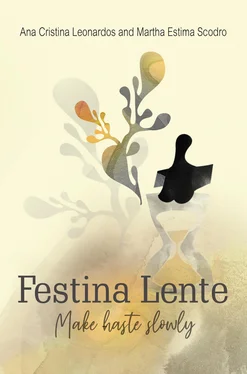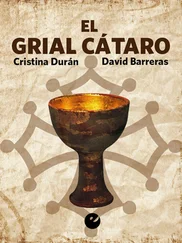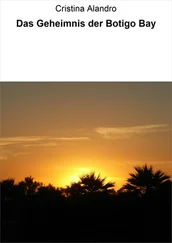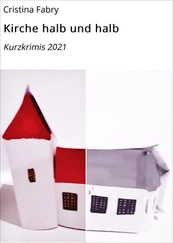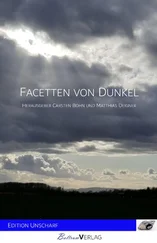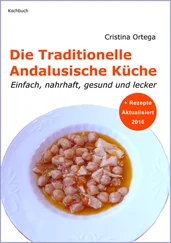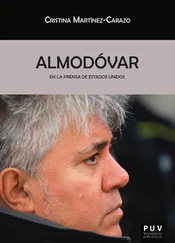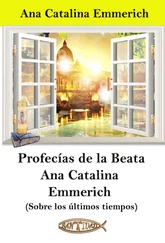The perspectives of the researcher and the psychologist overlapped, complemented each other, approached each other, withdrew from each other. The more we read, the more our topic grew.
To our main search (women and their fifties), we were quickly and disorderly incorporating keywords: middle age, menopause, life stories, perceptions of the empty/full nest, self-esteem, life expectancy, aging, longevity, new professions, and losses.
At the same time, the meta-work was being built and our fifties advanced to the rhythm of Kronos and Kairos.
We immersed ourselves in readings, and with them came the first writings, which further amplified our doubts. With each reading it became clearer that our curiosity revolved around what women were thinking.
How will the less exposed sides of these women be mapped? How will the faces of the feminine that reveal themselves from the epidermis inward be researched? What are their main reflections at this moment in life? What great worry does our fifties evoke?
These were some of the questions that echoed in our curious minds. When seeking the barely perceivable, the anticipated, we knew that we would have to start from the real and concrete.
At the end of an afternoon of work we looked exhausted and a little discouraged. How would we proceed?
And once again we thought about the first three lines of the Divine Comedy : either we find a Virgil or we will not move forward. Neither toward hell nor toward heaven.
Our work was in definite need of an external interlocutor. And it was under the guidance of Saul Fuks — Doctor in Clinical Psychology and Director of the Master’s Degree in Systemic Thinking at the National University of Rosario, Argentina — that we encountered some important clues and, above all, we understood that we would have to personally find — face-to-face, step-by-step — other women from our generation and talk with them.
And so we went to find them.
Walker, there is no path,
You make a path by walking,
Beat by beat,
Back to back
Antonio Machado
Rounds of conversation were what we wanted. One great big chat.
The female oral tradition of reflective conversations capable of promoting growth and transformation — so well described by the American therapist Mary Olson in Construcciones de la experiencia humana (Constructions of the Human Experience) by Pakman et al. — inspired the way in which we would conduct our study.
In women, voice, mind, and subjectivity are intertwined. This results in an inner voice, which is both a remedy and an antidote for emotional and psychological difficulties.
This concept of “inner voice” resonated directly with our readings on the social construction of narratives and the creation of contexts of reflection.
We realized that we had been talking at various levels: the individual, the dialogic, and the conceptual.
How would we go about also making this happen in the chats?
It would be necessary to listen to the conversations between the women and our own conversations — many of them silent — to create multiple contexts of reflection.
At the same time, the chat with time and with the literature broadened our vision and grounded us in the subject. With these readings we articulated concepts to better anchor the conversations that would be the basis of our work: the chat with the women.
Oh, it can come, middle age, it can come, it can come! Come closer, give me your hand, let me see your face... Oh... So this is how you look?... Oh, God help me... God help me...
Dorothy Parker
Unless we are afflicted by the syndrome portrayed in The Curious Case of Benjamin Button , by F. Scott Fitzgerald (Benjamin Button is born with the appearance of an old man and rejuvenates throughout his life, until he finishes it as a newborn), our destiny is to live in this time that stretches and contracts, as we gradually experience our end.
Between beginning and end, we live a true saga of indeterminations, the most dramatic of which is the absolute ignorance of the duration of life.
We undertake what could be called the “march of existence” — simultaneously open and finite. We are born and head toward the unknown — some more upright than others, some more aware of the uncertainties along the way, and others less so.
Swiss sculptor Giacometti shaped this universal human anguish in the sculpture L’homme qui marche . The lofty longilineal figure — in rough bronze, with one leg extended forward in a lengthy and firm stride — summarizes the movement of human existence and the strength from resilience we have to rely on along this journey.
It is difficult for us to admit that only in death will we reach the exact curvature of the arc of life. Even more challenging is for us to imagine that this arc — unknown and from a parabola that is only outlined — envelops the power that impels us to live.
In The Denial of Death , the American philosopher Ernest Becker states that the awareness of our mortality is so deeply rooted in our psyche that, whether we think about it or not, it affects the way we live in this world, it shapes the decisions we make, determines how we invest our time and, most importantly, it shapes who we become.
For Heidegger, we are beings released into the world, aware of our own finitude, and permeated with anguish. This anguish, which is sometimes paralyzing, is also what drives us and moves us to create.
The notion of finitude is a human trait. Without the notion of death, everything that humans are able to build around themselves would have little or no meaning. Based on this point of view, the end becomes the focus of light on the path taken.
Thus, human existence becomes an eternal dose of anguish: neither too much that it prevents us from acting, nor so little that it robs us of the meaning and significance of our desires.
In his text On Transience , Freud tells us how the ephemeral essence of life would lead to an increase in enjoyment and pleasure, as well as an appreciation of the moments experienced.
The awareness of transience can, however, be a painful experience and, in the name of preserving our psychic survival, we resort to self-deception. When conceptualizing self-deception as a strategy for human survival, sociologist and philosopher Eduardo Gianetti suggests that it is only when we forget to remember our finitude that we are able to live as long as we have time to live.
Art, with its images and metaphors, offers us another variety of resources to deal with the difficulty in accepting our finitude. Art invites us to observe life and death from new angles.
The play Elefante , by Igor Angelkorte, launches us into a science fiction in which humans have the option of aging or not. It is an allegory of a future in which death would not be a certainty, and almost everyone takes the pill of eternity. Those who do not want to take it seek refuge on an island called Seneca, opting for the finite and transitory life that we know today. It happens that the others, who aspire to eternity, also encounter their end; an accidental end or even that of another kind, that is perhaps more tragic: the weariness of inanity, the banality of meaningless actions, and the anguish generated by the prospect of eternal permanence. The play narrates the drama of this choice.
The film April , by Nanni Moretti, portrays the impact of becoming aware of the time that we don’t have to lose. The protagonist turns 44 and is gifted a measuring tape by a friend. The friend asks him to indicate there how many years he wants to live. He responds with 80. The friend marks 44 centimeters and extends the measuring tape to 80 centimeters. Stunned, upon realizing that the interval that remains is small, he regrets not having indicated a number closer to 100. The sudden awareness that life is finite makes him immediately embrace his dream project.
Читать дальше
